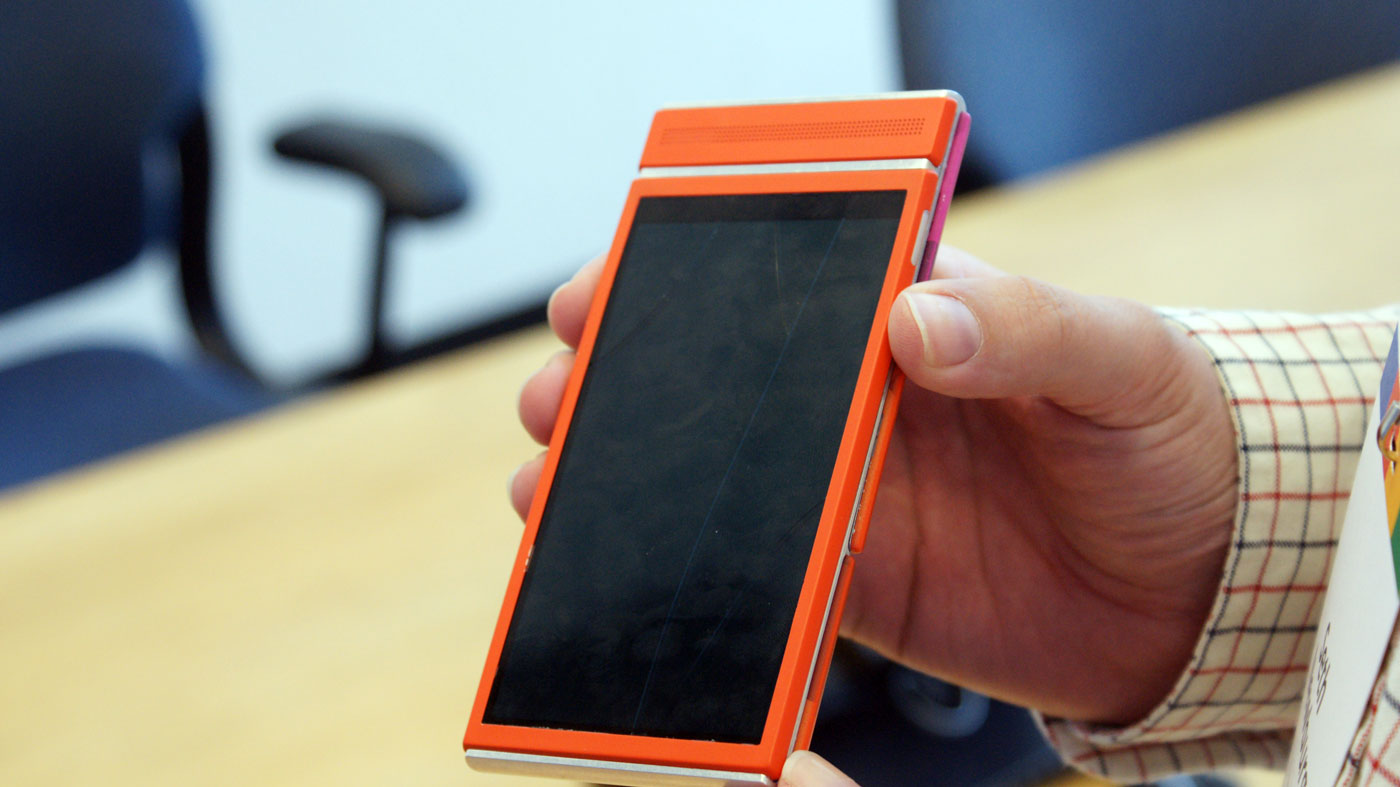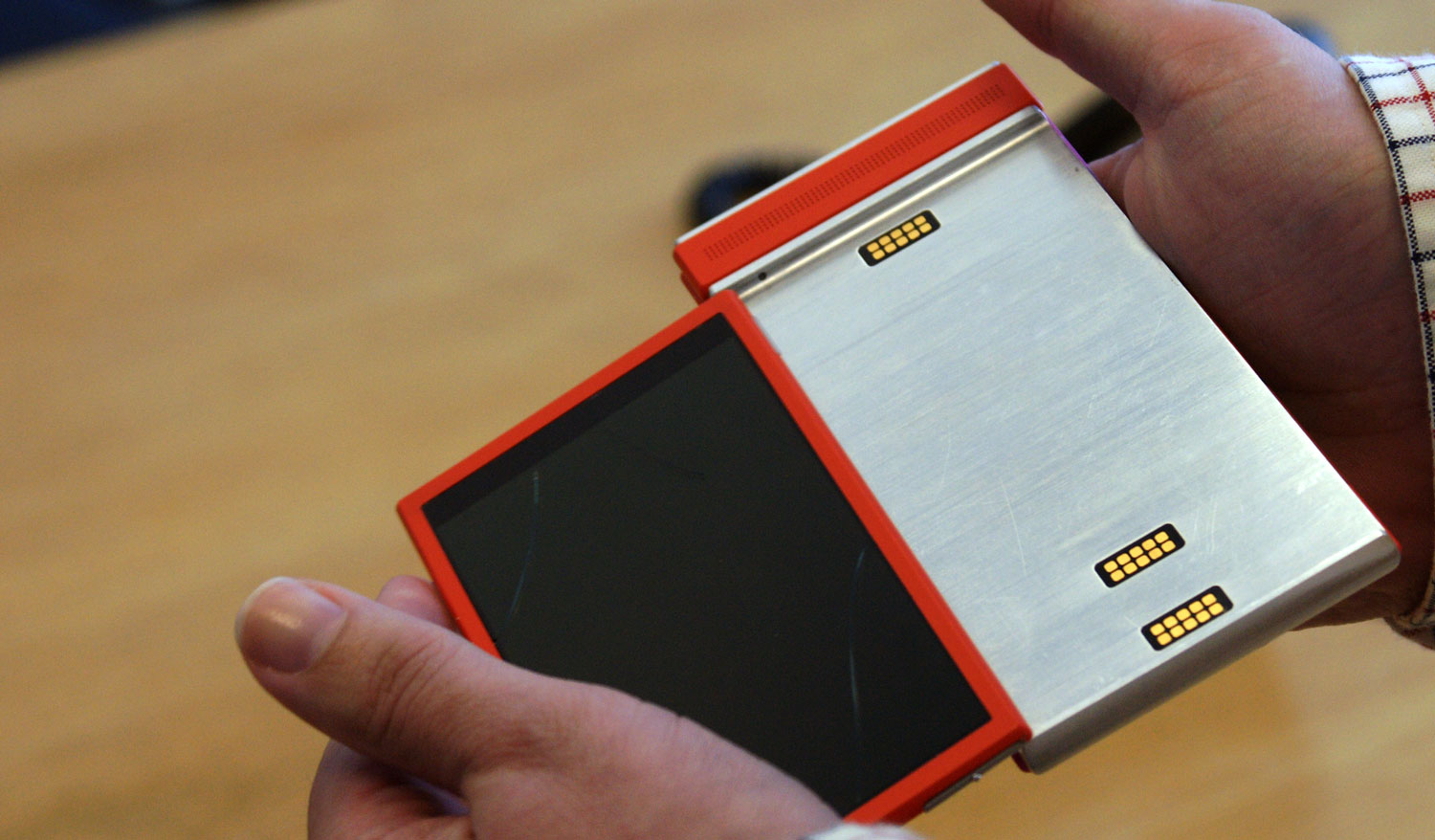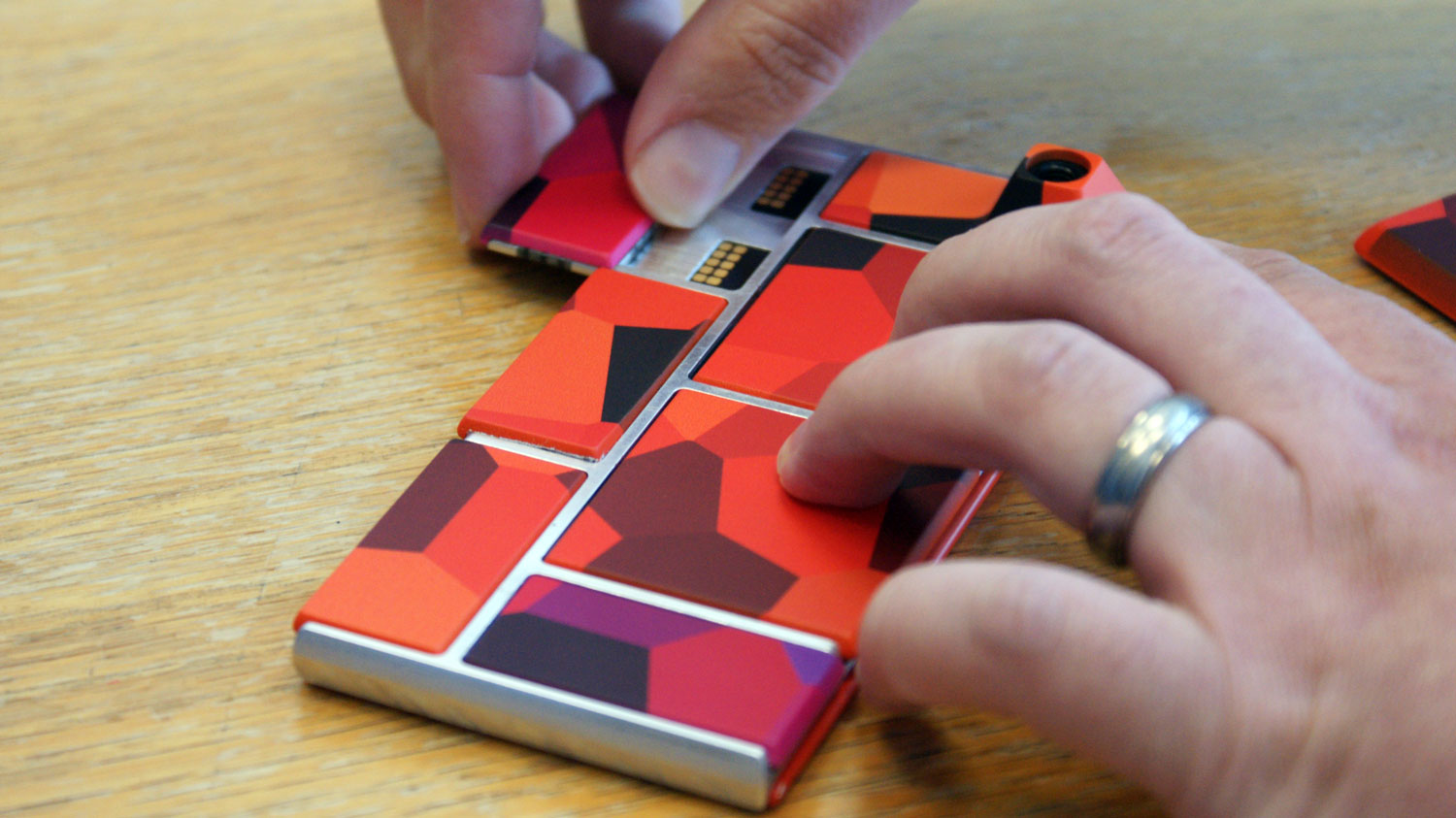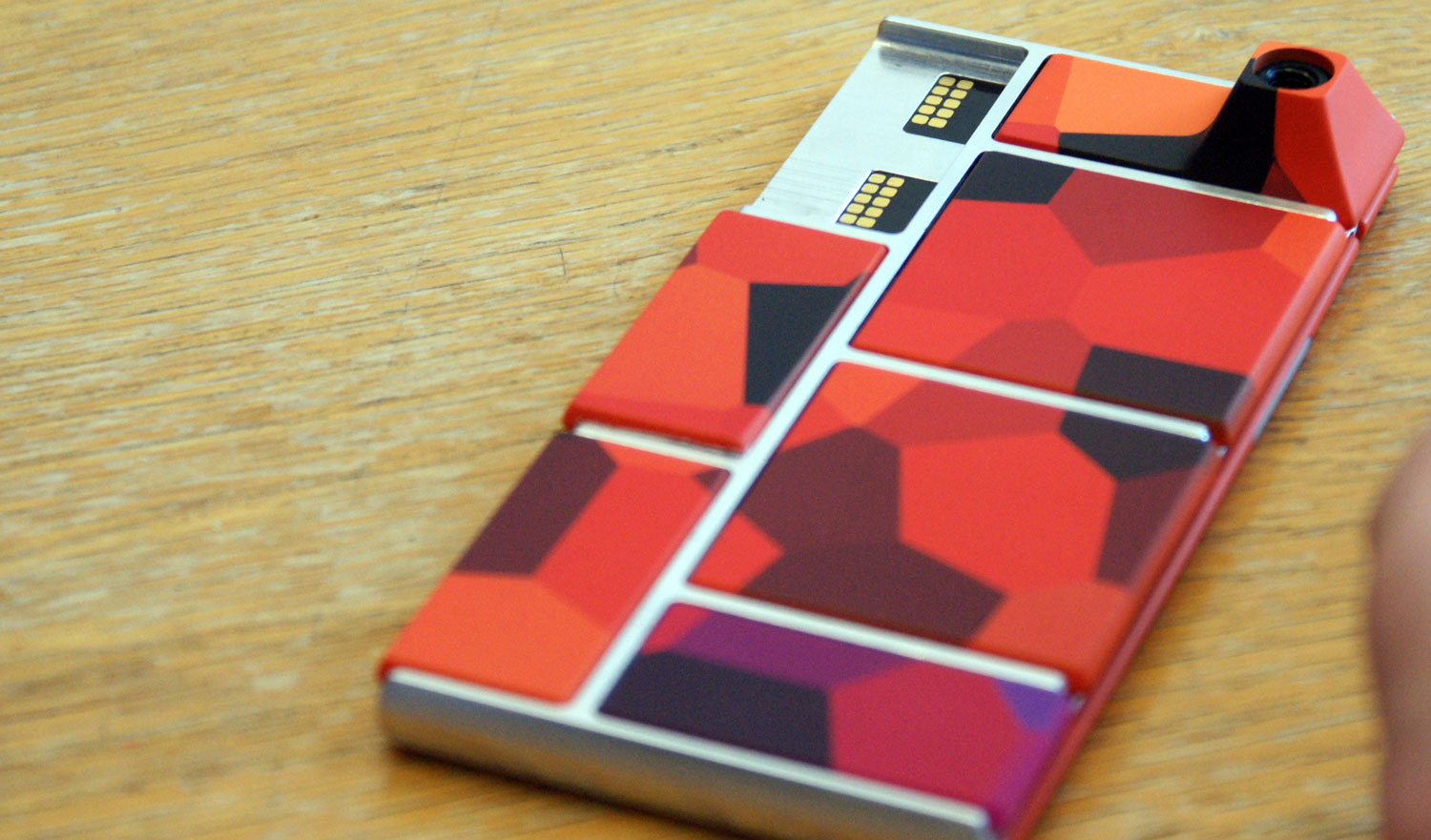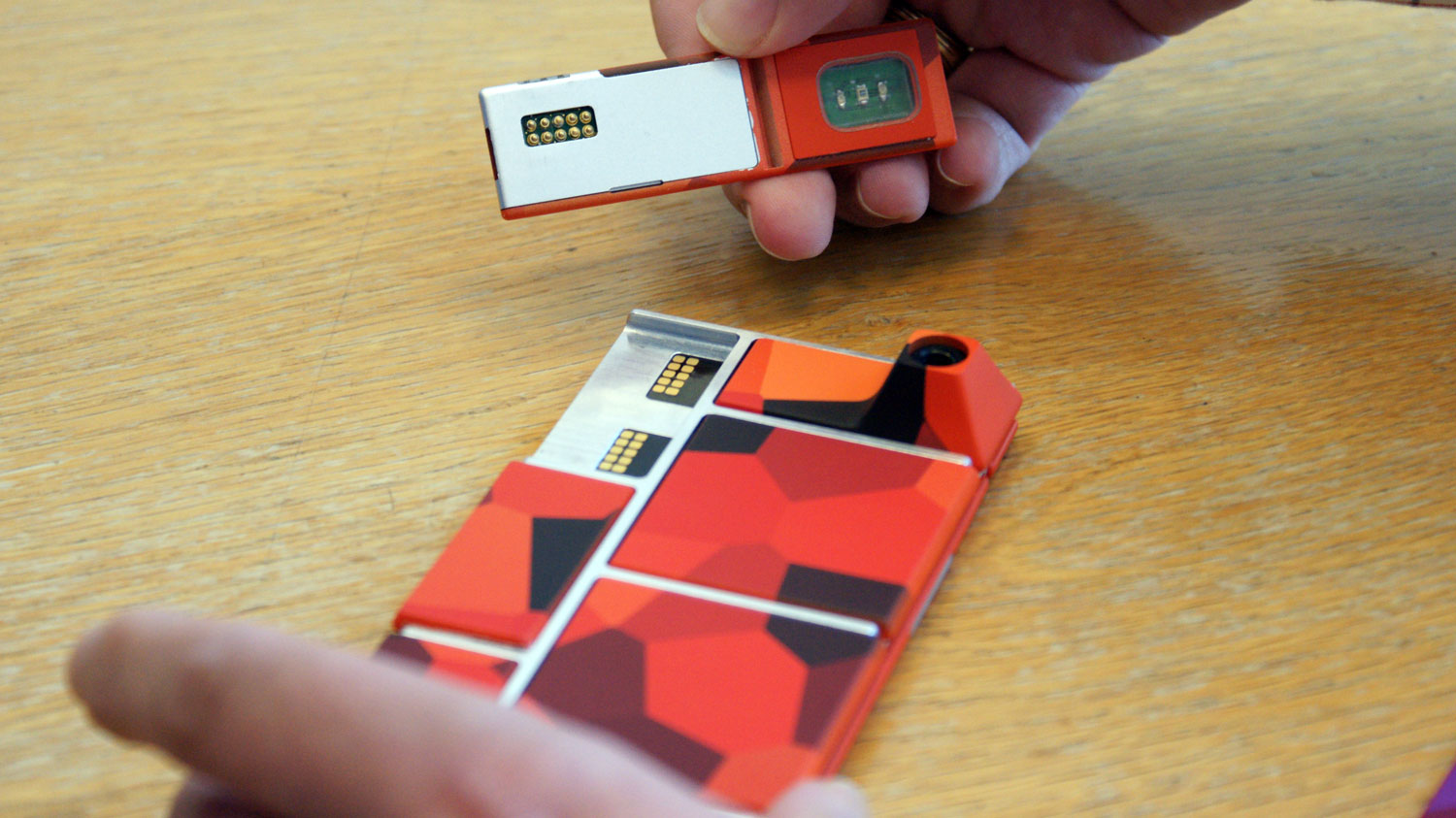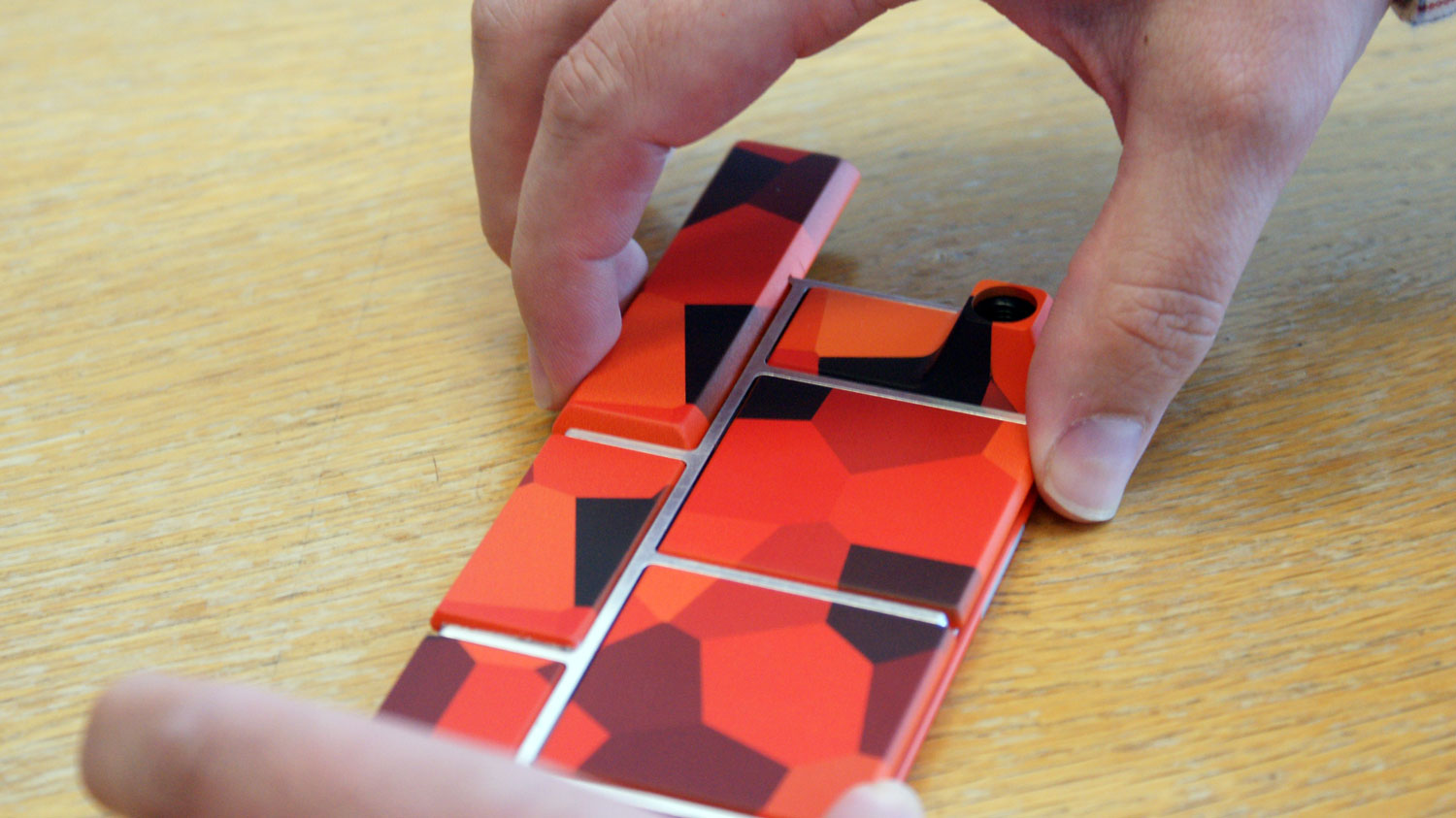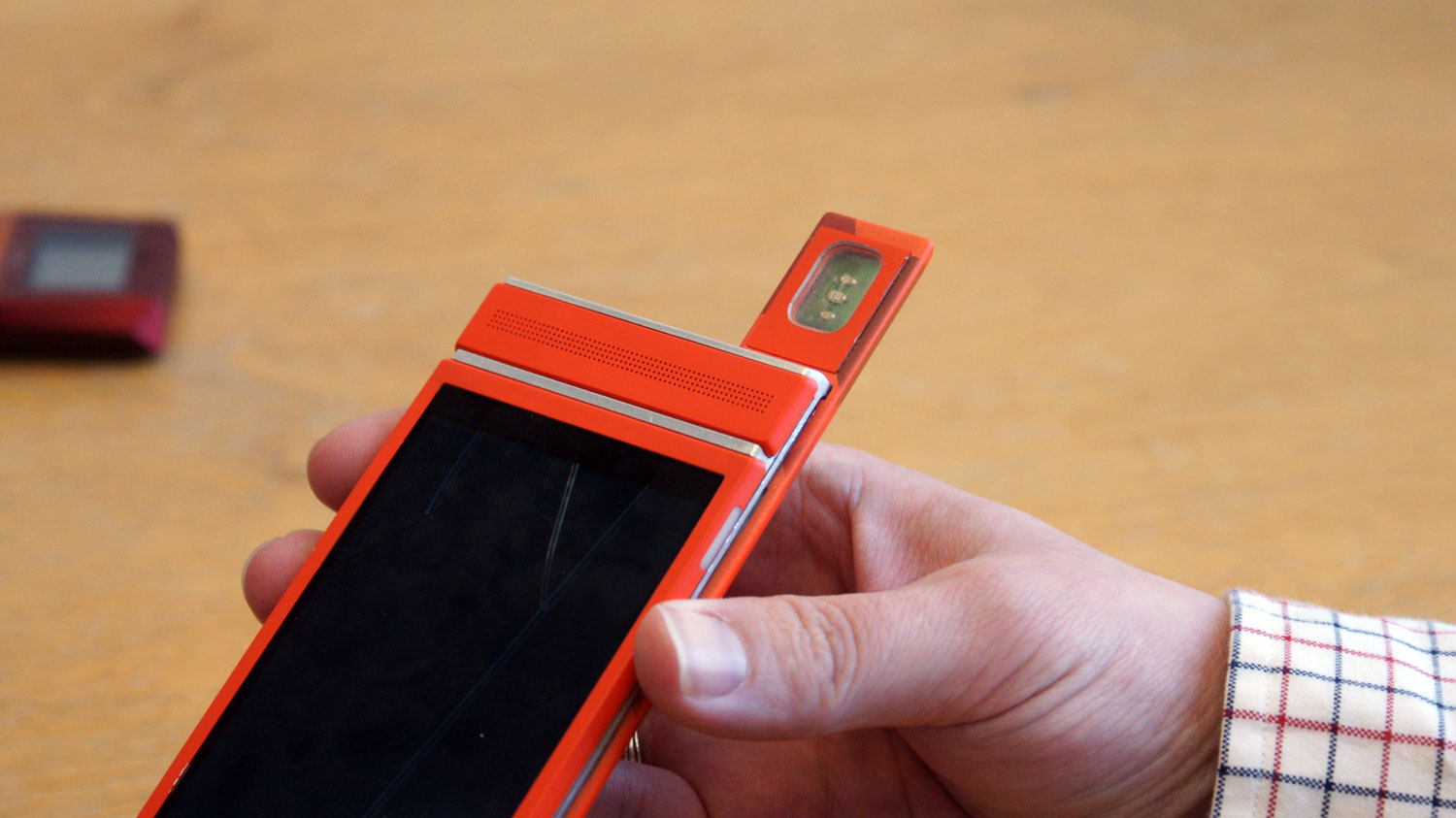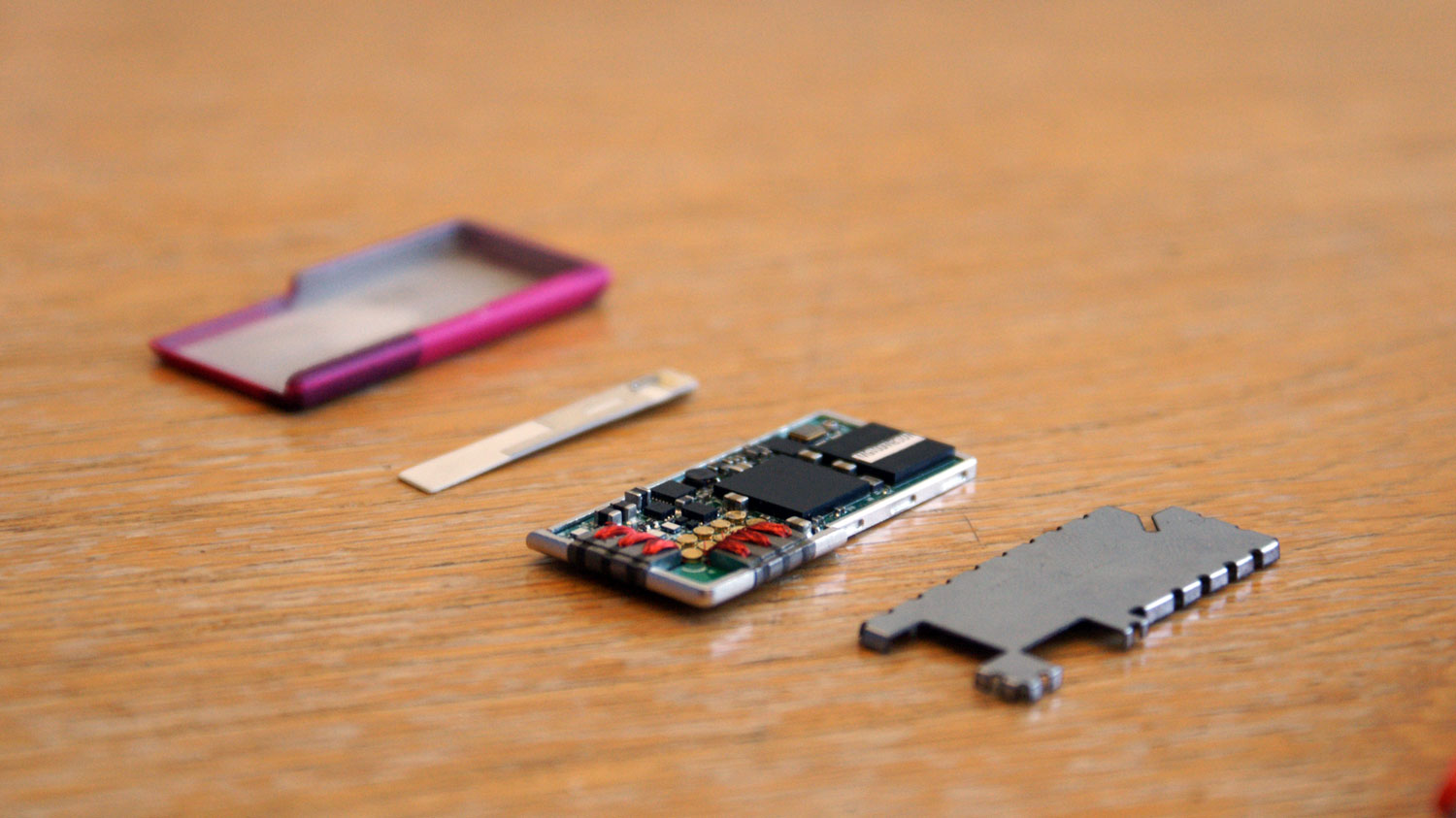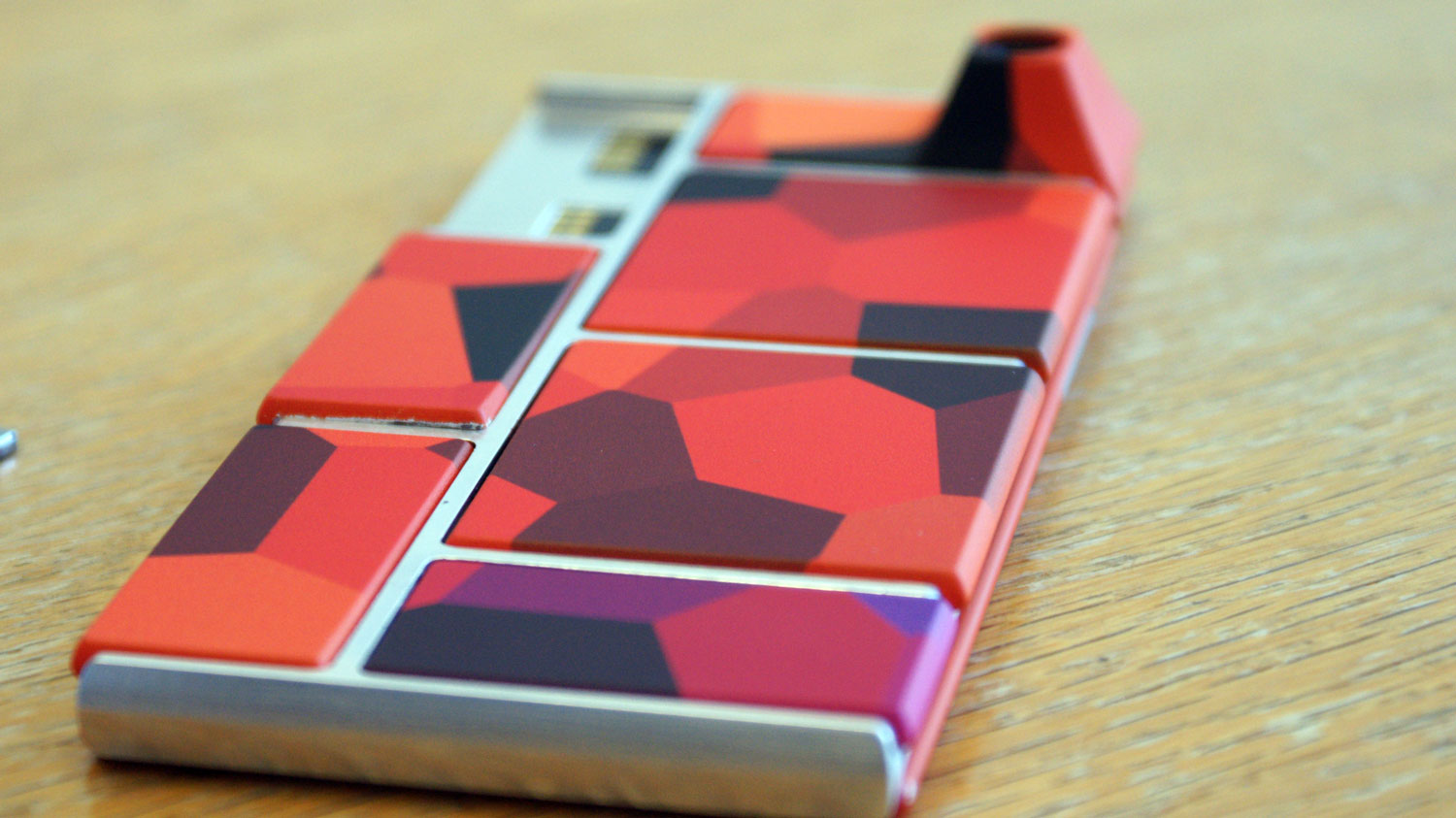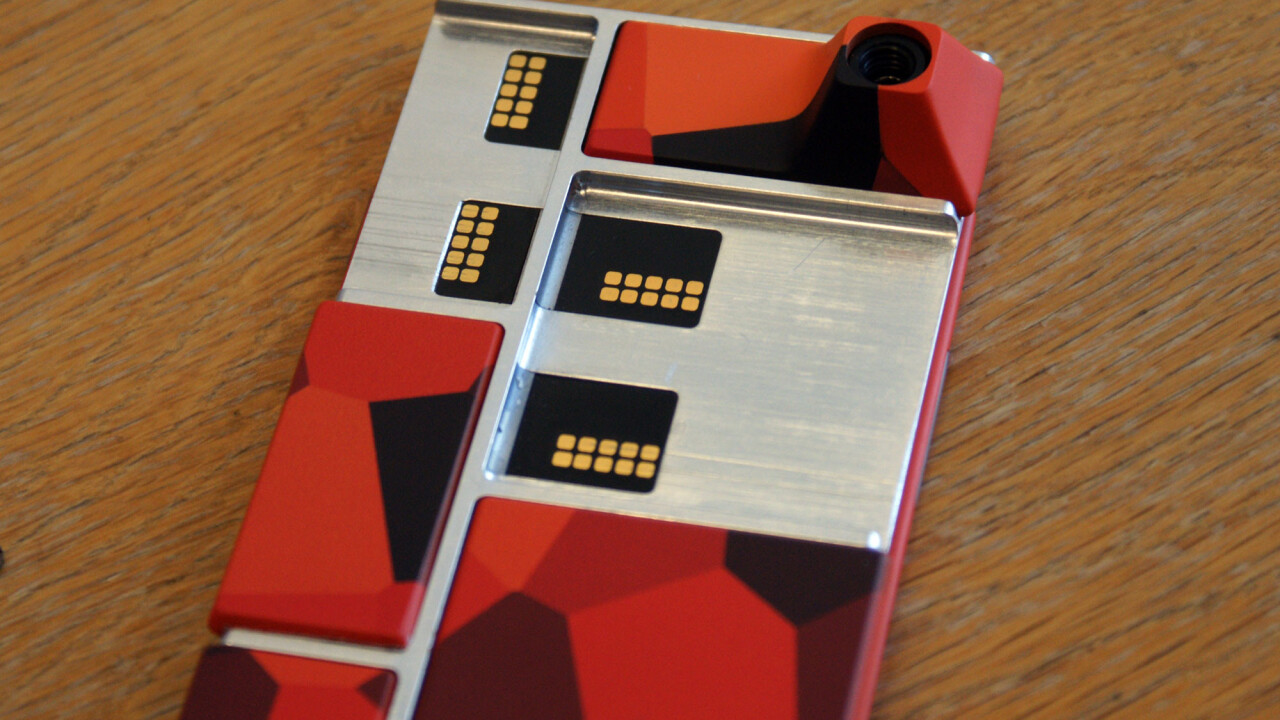
The build-it-yourself modular Google smartphone is one step closer to giving you the chance to build your perfect phone. It’s not going to be available this year. But, 2015 could be the beginning of a significant shift in the smartphone landscape.
Project Ara is part of the Advanced Technology and Projects (ATAP) group. The group is what Google retained in its sale of Motorola Mobility to Lenovo. The project is a bold plan to create an open-source smartphone hardware platform. Users would start with a piece of base hardware known as an Endo. Features would be added to the Endo as plug-and-play modules.
These modules can be a camera, battery, wireless radios, really anything partners can come up with. The hot-swappable modules give users the power to create a phone that works exactly how they want. For power users, a second battery module could be added to an Endo. If your phone is your main camera, you can add the best camera module available.
Those modules will be built by the developers using the MDK (Module Developers Kit) released today at the Project Ara event. It’s a new way of building a smartphone that could benefit users and developers. This is what we know so far.
- Availability: The phone is still in the early phases of development. But an introductory phone is expected sometime in 2015.
- Cost: Google is hoping to introduce an entry-level Grey Phone into the market that will cost $50 to produce. Paul Eremenko, head of the Project Ara was quick to point out that the street price of the phone would be determined by commerce partners. Google is also planning a high-end phone with a $500 production cost. Like the Grey Phone, that is a manufacturing cost not the street price.
- Size: Google showed off the “medium” Ara prototype today. The size is inline with an iPhone or Samsung Galaxy S5. A mini phone is also outlines in the MDK and a large phone for fans of the Samsung Galaxy Note line is on the product roadmap.
- Modules: The feature tiles known as modules will connect to the phone’s skeleton, known as the Endo via electropermanent magnets. When the magnets are hit with an “On” electrical pulse they will create a solid bond between the Endo and module. When they are hit with an “Off” pulse, the magnets will release the bond and you can replace the module. The magnets don’t need a constant charge to keep a bond. These modules will be created by various developers using the open source MDK that was released today. Cameras, antennas, batteries, processors, and anything that can be fit into a module shell will be available. The shells of those modules will be 3D printed to a user’s specified design.
- Buying Modules: Google will have a ecommerce site that will work alongside the Google Play store. Like purchasing an app, you will be able to purchase modules online. To help you decide which modules to purchase, Google has three potential systems. One is to sell the Grey Phone and allow users to purchase modules via an app that demos module functionality. The second is to use a friend’s phone in guest mode to test out modules on that phone. The third option is physical pop-up kiosks.
- Updating Android: Currently, Android doesn’t support a modular system, but the operating system is being updated to support it, with an expected release date of early 2015.
- Prototype: A pre-production prototype will be shown off in September of this year. The current prototype shown off at the Project ARA event doesn’t have the electropermanent magnet system. It uses clips to keep the modules in place. The power bus is also still being worked on. And unfortunately, today’s prototype had a cracked screen. (haha wut??) Although Paul Eremenko joked that the phone’s screen could quickly be replaced with a different module in the future.
- Modules can have multiple functions: A module can support as many features as a developer can cram into it. A rear-facing display module could also be a tiny battery to offset the power drain of the display. If it fits within the module’s physical constraints, it’s good to go.
- Why you should care: Project Ara phones are expected to have a life of five to six years – far longer than your current smartphone. Instead of updating your phone every two years, you save up for the latest modules. The goal is that when a new processor or high-megapixel camera is introduced, it’ll be available as a module for Ara owners to purchase. Plus, like the prototype at today’s event, when you break the screen, you can quickly replace it with a module.
- Why should developers care: The modular system is a way for developers to create a device that plugs directly into a phone with having to design and build a third-party piece of hardware. It removes the much of the industrial design elements and having to deal with Bluetooth or Wi-Fi radios for connectivity. Plus, there would be a built-in market of users ready to customize their phones with whatever niche functionality developers can build.
Google is betting on a future where functions are what you update, not phones. It’s also hoping to get a bare-bones Ara phones into the hands of feature phone users. If it can get developers to start building modules, your next phone could be more like individual Lego blocks instead of a single brick.
Get the TNW newsletter
Get the most important tech news in your inbox each week.
